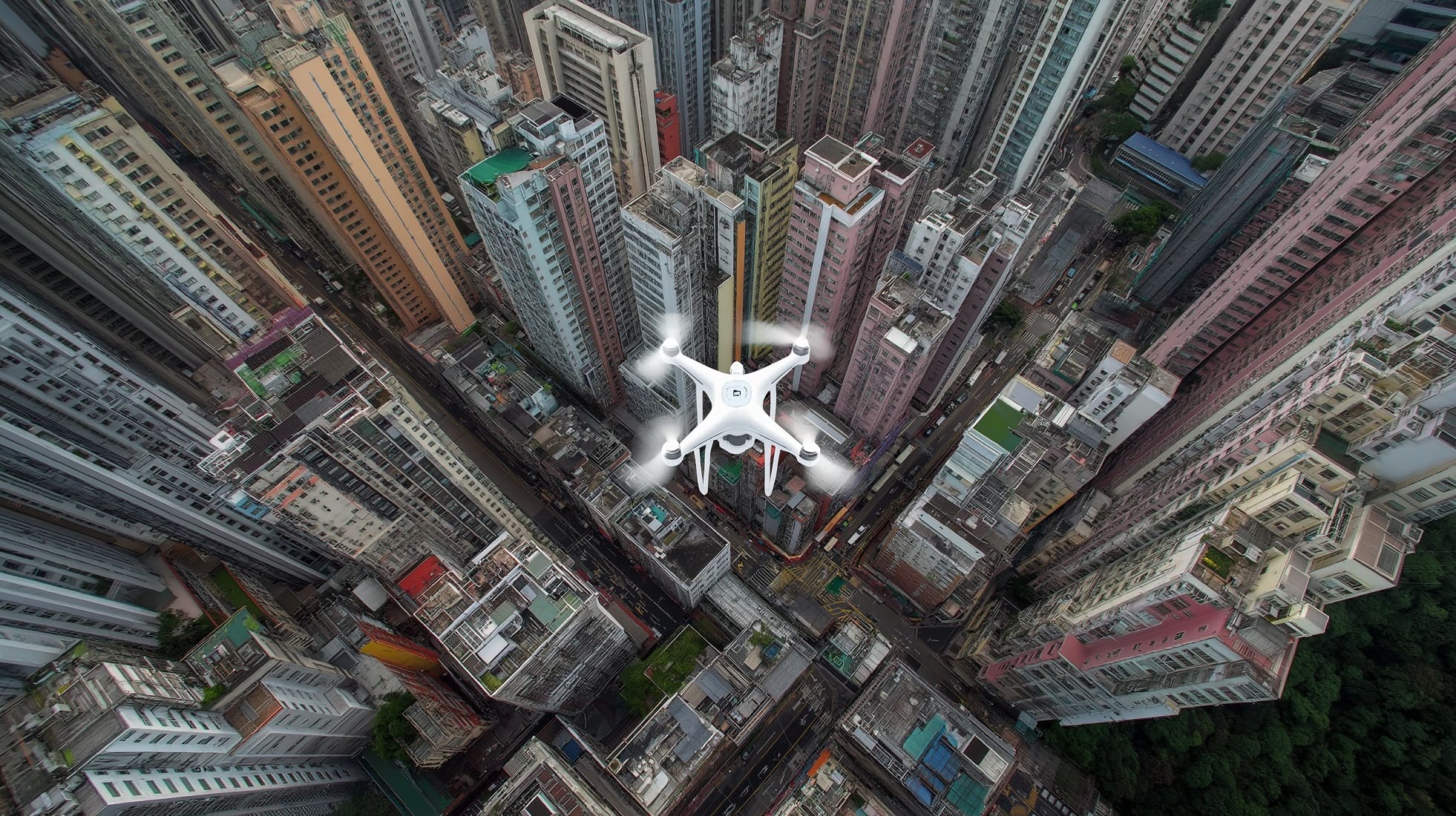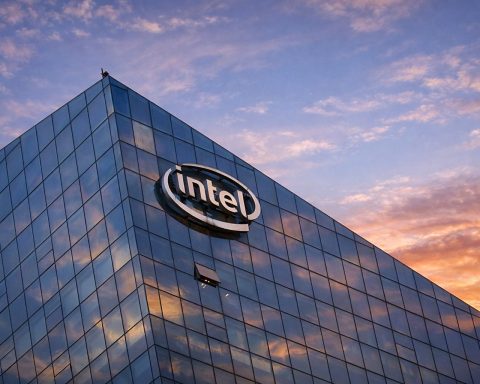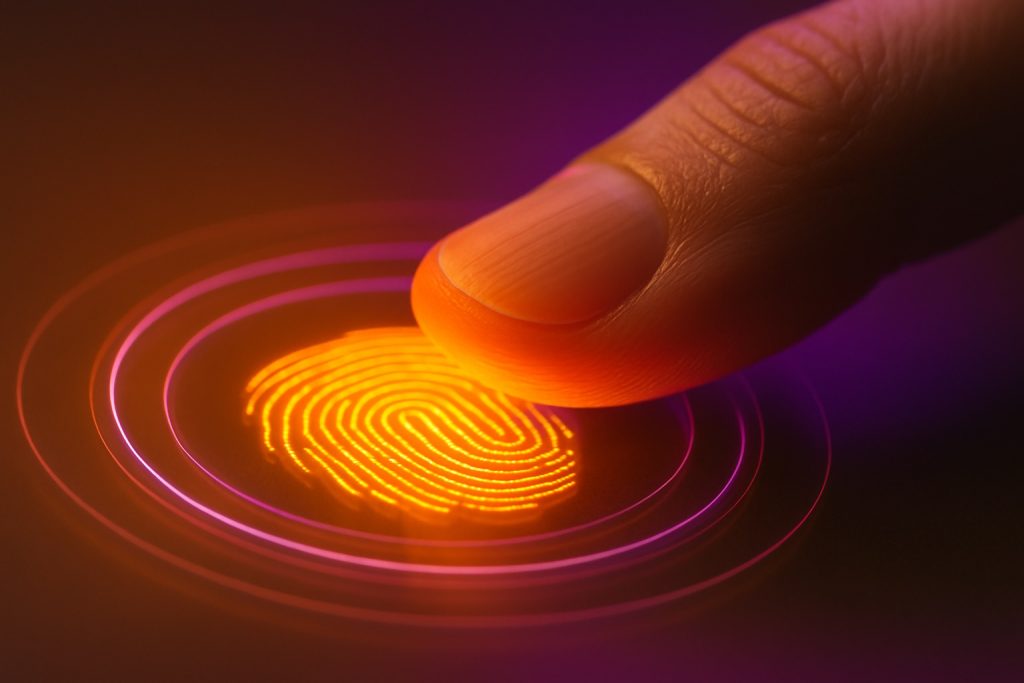- Hong Kong’s drone regime is governed by the Small Unmanned Aircraft Order (Cap. 448G) under the Civil Aviation Ordinance, which took effect on June 1, 2022 and became fully enforced on December 1, 2022.
- The framework uses a risk-based classification with Category A1 for drones up to 250 g, Category A2 for 250 g to 7 kg, and Category B for over 7 kg up to 25 kg.
- Category A1 is exempt from registration and most licensing, while Category A2 requires drone and remote-pilot registration, and Category B requires CAD permission and advanced training.
- Registration is via the CAD Electronic Portal for Small Unmanned Aircraft (eSUA), including creating an account, registering as Remote Pilot (minimum age 14), registering the drone (owner must be 18+), and affixing a CAD registration label to the drone.
- The standard Remote Pilot Certificate (Standard Rating) is valid for three years and covers A1/A2 operations, while an Advanced Rating is required for Category B flights.
- A third-party liability insurance requirement for Category B operations is planned with a minimum HK$10 million coverage, though not yet enforced at launch.
- No-fly zones include a 5-kilometer radius around airports, the Penny’s Bay Prohibited Area around Hong Kong Disneyland, and RFZs around Tai Mo Shan, Por Lo Shan, Siu Ma Shan, and parts of North Lantau, with the CAD Drone Map the official reference.
- Standard safety rules require daylight operations, visual line-of-sight, altitude limits (A1 up to 100 ft; A2 up to 300 ft), and minimum distances (10 m from bystanders for small drones, 30 m for faster A2 when over 20 km/h, with 10 m under slower speeds).
- Penalties can reach up to HK$100,000 in fines and up to 2 years’ imprisonment, with enforcement by CAD and the Hong Kong Police, including on-the-spot checks and seizure of equipment when needed.
- In mid-2025, amendments were proposed to create Category C for drones 25–150 kg and to enable BVLOS trials under a Low-Altitude Economy sandbox to test beyond-visual-line-of-sight operations.
Overview of Hong Kong’s Drone Regulatory Framework
Hong Kong has implemented a modern regulatory framework for drones (also called Small Unmanned Aircraft, or SUA) to ensure safe operations. The current rules are grounded in the Small Unmanned Aircraft Order (Cap. 448G), a piece of subsidiary legislation under the Civil Aviation Ordinance, which took effect on June 1, 2022 [1]. This framework adopts a risk-based approach – instead of distinguishing flights purely by hobby or commercial intent, it categorizes drone operations by weight and operational risk level [2]. In practice, this means lighter, lower-risk drones face minimal requirements, while larger or higher-risk operations must meet stricter conditions. The new regime was phased in with a six-month transition period and became fully enforced by December 1, 2022 [3]. Overall, flying a drone in Hong Kong is legal as long as you comply with these regulations, which are designed to safeguard aviation and public safety.
Recreational vs. Commercial Drone Usage
Under Hong Kong’s drone laws, recreational and commercial UAV operations are regulated under the same risk-based system – there isn’t a separate license just for “commercial” flying as in the past [4]. This marks a change from the pre-2022 rules, where any drone weighing over 7 kg or any commercial (for-hire) flight required a specific permit from the Civil Aviation Department (CAD) [5]. Now, as long as your operation stays within the standard operating criteria for its category (explained below), no special permit is needed purely because it’s commercial. Essentially, a hobbyist and a business have to follow the same rules if they are flying the same size drone under the same conditions. However, commercial operators often need to conduct more complex or higher-risk flights (for example, beyond visual line of sight or in busy areas), which would fall into the “advanced operations” category requiring extra steps like CAD permission and pilot certification. In those advanced scenarios, operators may need to prepare an operations manual and maintain flight records as part of the approval process, similar to legacy requirements for commercial permits [6]. But if a business is simply using a small drone under standard conditions, no additional commercial licensing is necessary beyond the normal drone registration and rules compliance.
Drone Classification Categories and Requirements
All drones in Hong Kong up to 25 kg are classified into three categories based on their weight and the operational risk involved:
- Category A1: Drones weighing 250 grams or less [7]. These pose very minimal risk. Category A1 operations have the least requirements – they are exempt from registration and most licensing rules, though basic safety rules still apply (see Operational Rules below). Example: small toy drones or DJI Mini series models fall in A1.
- Category A2: Drones weighing more than 250 g and up to 7 kg [8]. Most consumer and prosumer drones (camera drones, etc.) fall in A2. These have “standard” operating requirements: they must be registered and labeled, and the pilots must be registered, but no special flight permission is needed as long as you obey the standard operational limits. A2 drones can be flown for recreational or general commercial use without case-by-case approval, provided you stick to the rules.
- Category B: Drones weighing above 7 kg up to 25 kg, or any drone operation that exceeds the standard limits for A1/A2 (higher risk activities) [9] [10]. This “advanced operations” category also includes flights carrying dangerous goods or flights in restricted flying zones, regardless of the drone’s weight [11]. Category B operations require special CAD permission before flight and the remote pilot must have advanced training (more on that below). In short, if you want to fly a heavier drone, or do things like fly in a no-fly zone, over people, beyond visual line of sight, at night, etc., it likely counts as a Category B advanced operation and triggers additional requirements.
(Note: Drones above 25 kg are generally outside the scope of the “small” UAV category and need separate approval. As of 2025, Hong Kong is planning new rules to cover drones up to 150 kg – see Recent Updates section.)
Registration and Licensing Requirements
Except for the very lightest drones, Hong Kong now requires both drones and pilots to be registered through the CAD’s Electronic Portal for Small Unmanned Aircraft (eSUA). Below is an overview of registration and licensing steps and requirements:
- Create an eSUA Account: First, users must sign up on the CAD’s eSUA online portal (or mobile app) with an email and password [12]. This account will be used to manage your pilot profile and drone registrations.
- Register as a Remote Pilot: All drone pilots of Category A2 or B SUAs must register themselves (minimum age for a remote pilot is 14 years old) [13]. The online registration will walk you through a safety information module to ensure you understand the rules [14]. You will need to provide personal details and an identity proof (HKID for residents, or passport/other ID for non-residents) and a proof of address [15]. Once completed, CAD issues a Remote Pilot Certificate (Standard Rating) by email [16]. This certificate is valid for 3 years and serves as your basic drone pilot license for standard operations.
- Register Your Drone(s): Each drone over 250 g (Category A2 or B) must be registered to a responsible owner (who must be 18 or older). Through the eSUA portal, you will “Add SUA” and input details like the drone’s brand, model, serial number, type and weight [17]. After submitting this info, the CAD will process it and send you a letter (typically within a week) containing a unique registration label (sticker) for the drone [18]. Registered drones in Hong Kong must carry an official CAD registration label, as shown above. The label is mailed to the owner upon successful registration and must be affixed to the drone’s body. Once you receive the label, you must attach it to your drone in a clearly visible spot (avoid propellers or battery doors so it won’t fall off) [19]. You then upload a photo of the labeled drone to the eSUA system to verify, after which a SUA Registration Certificate for that drone will be issued [20]. A single pilot can register multiple drones under their profile.
After these steps, you will have a registered drone with a tail number and a licensed pilot ready to fly (for standard operations). Category A1 drones (≤250g) are exempt – you do not need to register an A1 drone or its pilot in those cases [21]. However, even for exempted tiny drones, pilots are encouraged to familiarize themselves with the safety rules.
Remote Pilot Licenses: The default pilot certificate obtained via the online registration is a Standard Rating (sufficient for Category A1 and A2 operations) [22]. For higher-risk Category B operations, a pilot must obtain an Advanced Rating. This requires additional training and assessment: one must complete an approved course from a CAD-accredited drone training organization and pass the required exams [23]. The CAD has authorized certain training bodies (e.g. the Hong Kong Productivity Council and Vocational Training Council) to offer advanced drone pilot courses [24]. After completing training, the pilot gets an Advanced Rating certificate allowing them to conduct Category B flights. Permission from CAD is still required for each advanced operation, but having the advanced qualification is a prerequisite for applying [25]. (As of mid-2022, hundreds of pilots have already undergone advanced training under this scheme [26].)
Equipment and Insurance: All drones in Category A2 and B must be equipped with basic safety features like a flight data logging system and geo-awareness (GPS-based map that warns of restricted areas) [27]. These capabilities are often built-in on modern GPS drones. Additionally, the law will introduce a requirement for third-party liability insurance (covering bodily injury or death) for certain operations. Specifically, Category B (advanced) flights are slated to require insurance with at least HK $10 million coverage [28]. This insurance mandate had an “effective date to be determined” and was not yet enforced during the initial launch of the regulations [29]. Pilots should check the latest CAD announcements, as mandatory insurance could be implemented in the near future for advanced or even all drone operations.
No-Fly Zones and Restricted Areas
Hong Kong has many areas where drones cannot be flown without special permission. These Restricted Flying Zones (RFZs) are crucial for pilots to heed. They include obvious high-risk locations and some newly added sites under the 2022 rules. Key no-fly areas include:
- Airports and Flight Paths: Drones may not be flown within 5 kilometers of any airport or aerodrome, such as Hong Kong International Airport on Lantau Island [30]. This is a strict rule to prevent interference with manned aircraft. Heed the 5 km radius around airports and heliports – it’s a major offence to breach this airspace.
- Sensitive Government or Infrastructure Sites: Many government facilities, military sites, ports, power plants, etc., are likely off-limits. Notably, there is a designated “Prohibited Area” around Penny’s Bay (northeast Lantau) which includes Hong Kong Disneyland – drone flights over Disneyland are entirely forbidden [31]. This ban is for security and public safety (Disneyland also has daily fireworks, posing additional hazard to drones).
- Country Parks and Scenic Areas: As part of the updated regime, several popular hilltops and scenic spots have been added to the no-drone list [32]. For example, Tai Mo Shan (Hong Kong’s highest peak), Por Lo Shan (Pineapple Mountain), Siu Ma Shan, and large portions of North Lantau Island are now RFZs where recreational drones were previously seen but are no longer allowed [33]. Even certain coastal areas like parts of Tolo Harbour near Science Park and beaches like Long Ke Wan have new restrictions [34]. These measures aim to protect hikers, wildlife, and avoid drones straying into flight paths or privacy-sensitive areas.
All restricted zones are depicted in the CAD’s official Drone Map (available on the eSUA website and app) [35]. Before flying, pilots should always check this map to ensure their intended flight location is clear. The rule of thumb is never fly in an RFZ unless you have obtained specific CAD permission. If you can fly in a fully enclosed indoor space, that is generally allowed even in an RFZ (since the drone can’t escape the enclosure) [36], but outdoor flights in those zones are prohibited for normal users.
Apart from geographical zones, note that drones must not fly over crowds or busy populated areas where an out-of-control drone could endanger many people. Flying over urban streets, densely packed residential areas, or gatherings of people is unsafe and likely violates the “endangering acts” provisions of the law [37]. Always choose wide open areas for flying, well away from uninvolved persons.
Safety and Operational Rules for Drone Flights
When flying in Hong Kong, drone operators must follow a set of standard safety guidelines and operational limits set by the CAD. Below are the key rules to know (for typical A1/A2 category operations):
- Daylight-Only Operations: You may only fly during daylight hours. Flying at night or in dark conditions is not allowed under standard operations [38]. (Advanced pilots can apply for permission to conduct night flights as a Category B operation, but this is exceptional.) Always ensure you have sufficient daylight to safely monitor your drone.
- Maintain Visual Line-of-Sight (VLOS): The remote pilot must keep the drone within direct visual sight at all times during flight [39] [40]. You cannot rely solely on the drone’s camera or first-person-view feed; you or an observing assistant must be able to see the aircraft with unaided eyes. If you lose sight of the drone or fly beyond line-of-sight, you are transitioning into an illegal operation (unless explicitly authorized as an advanced BVLOS flight). Staying in VLOS enables the pilot to effectively “see and avoid” any obstacles or other aircraft.
- Altitude Limits: There are strict altitude ceilings. Category A1 drones (≤250g) must not fly higher than 100 feet above ground level (AGL), and Category A2 drones (>250g up to 7kg) have a limit of 300 feet AGL [41]. These height limits (approximately 30m for A1 and 91m for A2) significantly reduce the chance of conflict with manned aircraft. Even with an advanced permission, flight altitude may be restricted by CAD; but in general no drone should go above 300 ft without explicit approval. Always be aware of your drone’s altitude via its telemetry – breaching the limit is an offense.
- Horizontal Distance from People and Property: Drones must be kept at a safe distance from other people, vehicles, and structures not involved in the operation. As a baseline, for small drones a minimum lateral separation of 10 meters from any uninvolved person, building, or vehicle is required [42]. For larger Category A2 drones, if you are flying at higher speeds, you should keep even further away – at least 30 meters distance when flying faster than 20 km/h (for slower speeds under 20 km/h, 10 m may suffice) [43]. In simpler terms, don’t fly directly over or too close to bystanders; maintain a buffer zone for safety. During takeoff and landing, make sure no one is standing immediately adjacent to the drone either. (Previously, Hong Kong used a 50-meter guideline for separation [44], and while the new rules allow a bit closer in some cases, 30–50 m is still a good practice for larger drones.)
- Maximum Speed: Related to the above, there are speed limits for drones. Category A1 drones are limited to about 20 km/h max, and Category A2 drones to 50 km/h max under the standard category [45]. These limits reduce kinetic energy and injury risk. Most off-the-shelf drones have built-in speed modes that you should keep within these bounds unless you have special permission.
- Weather and Visibility:Do not fly in adverse weather. Operations are only allowed in good visibility conditions. Flying is prohibited under red or black rainstorm warnings, tropical cyclone (typhoon) warnings, or a Strong Monsoon Signal [46] – basically, if serious weather alerts are issued, leave the drone at home. High winds, heavy rain, or fog can make drone flight unsafe and unpredictable, so the law requires suitable weather. Even on a normal day, avoid flying into clouds or fog where you lose line-of-sight. Ensure you have at least 3 km visibility and the drone stays well below any cloud cover.
- No Dangerous Goods or Dropping Objects: Attaching or carrying dangerous goods (e.g. flammable, explosive or harmful materials) on a drone is strictly forbidden unless you have explicit permission for a special operation [47]. Similarly, you must not drop any objects from a drone if doing so could endanger people or property. (This would be considered an “endangering act” under the law.) Always secure your battery and any mounted equipment so nothing can fall off in flight.
- Respect Privacy and Property: When filming or taking photos with a drone, be mindful of privacy laws. Hong Kong’s Personal Data (Privacy) Ordinance applies to drone photography – avoid capturing identifiable images of people in private settings without consent. The Privacy Commissioner’s office has issued guidance on responsible drone use to prevent intrusive surveillance [48]. Additionally, you should obtain permission from landowners if you plan to take off or land on private property [49]. Do not trespass or damage property in the course of flying. While not an aviation rule per se, these aspects are important for legal and courteous drone operation.
By following the above rules, drone pilots can significantly reduce the chances of accidents or legal issues. These operational limits for standard Category A1/A2 flights cover most hobbyist scenarios. If you find these limits too constraining (for example, you need to fly at night, beyond 300 ft, or in a restricted area for a project), that pushes your activity into Category B advanced operations – you would then need to pursue CAD’s permission and additional requirements before flying.
Penalties for Violations and Enforcement Mechanisms
Hong Kong authorities take drone violations seriously. The penalties for breaking drone laws can be quite severe, especially if the offense endangers others. Under the Small Unmanned Aircraft Order, a person convicted of an offense (on indictment in court) can face a fine up to HK $100,000 (Level 6 fine) and up to 2 years imprisonment [50]. Even minor breaches can result in hefty fixed penalties or summary fines, so it’s in every pilot’s interest to comply with the regulations.
Enforcement of drone laws is a joint effort by the Civil Aviation Department and the Hong Kong Police. The law designates certain CAD inspectors and police officers as “authorized officers” empowered to enforce SUA regulations [51]. Enforcement mechanisms include:
- On-the-Spot Intervention: Officers may approach a drone pilot to inspect their permits or direct them to land the drone immediately if it’s being flown unsafely or in a restricted area. It is an offence to refuse an officer’s instruction to stop a flight or to land the drone [52]. Officers can also demand your pilot certificate, drone registration proof, or other relevant documents on the spot [53]. Failing to produce documents or obstructing an officer in their duties is an offence in itself [54].
- Seizure of Equipment: If necessary, authorities can seize and detain the drone and its control equipment [55]. For example, if a drone is being flown in a dangerous manner or over a sensitive area, the police can confiscate the UAV as evidence. They are also empowered to examine the drone’s data (flight logs, etc.) as part of an investigation.
- Investigation and Prosecution: Depending on the seriousness of the incident, enforcement can range from a warning for minor infractions up to criminal prosecution. The CAD and Police have stated they will use a range of measures – from issuing warnings or safety directions, up to suspending or revoking a drone’s registration, an operator’s permission, or a pilot’s rating for serious breaches [56]. In the case of egregious violations or repeat offenders, they will pursue formal prosecution which could lead to the fines/prison mentioned earlier [57]. For instance, flying a drone that endangers an aircraft or people on the ground would likely result in prosecution.
Hong Kong authorities have been proactive in educating the public as well. The CAD and Police have run publicity campaigns (TV/radio ads, leaflets, briefings at popular flying sites) to raise awareness of the new drone rules [58]. The goal is to achieve compliance through education first, but they have made it clear that ignorance of the law is no excuse – enforcement actions will be taken against those who flout the rules and jeopardize safety. Always err on the side of caution and follow officials’ instructions if you are approached during a drone flight.
Authorities Responsible for Drone Regulation
Civil Aviation Department (CAD): The CAD is the primary aviation regulator in Hong Kong and oversees all aspects of drone law compliance. It is the CAD that developed the SUA Order and it manages the Unmanned Aircraft Office, which handles drone registrations, pilot certifications, and the issuance of permissions for advanced operations [59] [60]. The CAD provides official guidance (e.g. the Safety Requirements Document and circulars), maintains the eSUA portal and Drone Map, and approves training organizations. If you have questions or need to apply for a drone operation permission, the CAD is the authority to contact (they can be reached via the SUA office at sua@cad.gov.hk or by phone) [61].
Hong Kong Police Force (HKPF): The police play a crucial enforcement role. They are often the first responders to drone-related complaints or incidents. Police officers (especially those in airport security or crowd management roles) have been given authority under the law to enforce drone regulations alongside CAD inspectors [62]. In practice, you might encounter police officers patrolling known drone-flying hotspots to ensure compliance or responding if a drone is reported in a restricted area. The Police also coordinate with CAD for joint operations – for example, at major events or during heightened security periods, they will actively watch for illegal drone use [63]. If you need to report unsafe drone activity, you can contact the police.
Other Relevant Authorities: While CAD and HKPF are the main bodies, it’s worth noting that the Privacy Commissioner for Personal Data (PCPD) has a role in cases where drone usage might violate privacy laws. They have issued guidelines on using cameras on drones responsibly [64]. Additionally, if you plan to fly near any sensitive facilities (e.g. port areas or country parks), other departments might have their own permit systems (for example, some universities or parks require local permission in addition to CAD rules). Always check if any site-specific rules apply from the authority in charge of that location (e.g. the Housing Authority for estate areas, etc.). But in terms of overarching drone regulation, CAD and the Police are the key authorities in Hong Kong.
Recent Updates and Legislative Developments (2022–2025)
Hong Kong’s drone laws have evolved significantly in the past few years, and further changes are on the horizon as of 2025:
- 2022 – New Regulatory Regime Implemented: The introduction of the Small Unmanned Aircraft Order in 2022 was the biggest overhaul of drone law in Hong Kong’s history. It shifted the old permit system to the current risk-based categories, requiring registrations and defining standard vs. advanced operations. After a grace period, full compliance became mandatory by December 2022 [65]. The new rules opened the door for broader drone use (e.g. recreational flying under 7 kg no longer needed case-by-case approval), while simultaneously tightening safety oversight (through pilot registration, labels, etc.). By mid-2022, over 10,000 people had registered as remote pilots under the new system, reflecting the rapid uptake by the community [66].
- 2023 – Refinements and Industry Uptake: Through 2023, the CAD continued to refine guidance and roll out the Advanced Training Organisation scheme. More training courses were approved, and the drone industry and public services in Hong Kong started utilizing drones under the new framework (e.g. for surveying, inspections, photography). The government also monitored how the law was working in practice and gathered feedback for improvements. No major legislative changes occurred in 2023, but it set the stage for expanding drone use cases.
- 2024 – Safety Document Updates: In 2024, the CAD updated the Safety Requirements Document (Issue 1 Rev. 3 in May 2024) [67], incorporating lessons learned and clarifications. Minor tweaks to procedures (like the still pending insurance requirement) were communicated. The groundwork was being laid for accommodating beyond-visual-line-of-sight trials and heavier drone operations via a “sandbox” approach.
- Mid-2025 – New Category and BVLOS Trials: In a move to further integrate drones into Hong Kong’s economy, the government announced plans in mid-2025 to ease certain restrictions and expand the legal framework. Notably, a proposal was introduced to create a new Category C for drones above 25 kg up to 150 kg [68]. Previously, drones above 25 kg were not covered by the SUA Order; with Category C, these larger unmanned aircraft (for cargo delivery, larger survey drones, etc.) will have a pathway to operate under specified conditions. At the same time, provisions are being added to enable trial operations of unconventional aircraft over 150 kg – effectively allowing experimental flights of large drones or urban air mobility vehicles under strict CAD oversight [69]. These legislative amendments to Cap.448G and related Air Navigation orders were gazetted in late May 2025 and were expected to take effect by July 2025 after Legislative Council approval [70].
- Low-Altitude Economy Initiatives: Alongside the legal changes, Hong Kong launched a “Low-Altitude Economy” regulatory sandbox program. This is aimed at promoting innovation in drone uses like infrastructure inspection, logistics, and other beyond-line-of-sight operations. In early 2025, the first pilot projects began – for example, Hong Kong’s electric utility (CLP Power) started a trial of beyond-visual-line-of-sight (BVLOS) drone flights to inspect overhead power lines in remote areas [71] [72]. The CAD granted special relaxations of the BVLOS rule for these tests, demonstrating a willingness to accommodate advanced operations safely. These sandbox trials are ongoing and help the CAD gather data to eventually formulate broader BVLOS regulations in the future.
In summary, since 2022 Hong Kong has built a comprehensive legal structure for drone operations, and it continues to adapt it as drone technology advances. It’s important for drone pilots to stay updated through the CAD’s website and official announcements. Regulations may change (for instance, introducing the new Category C or activating insurance requirements), and new opportunities like supervised BVLOS flying might open up as policies evolve. By following the latest guidelines and legal requirements, drone enthusiasts and professionals can enjoy flying in Hong Kong’s skies while contributing to a safe and innovative aerial environment. [73] [74]
References
1. www.info.gov.hk, 2. www.info.gov.hk, 3. www.hk-cityguide.com, 4. www.info.gov.hk, 5. uavcoach.com, 6. uavcoach.com, 7. www.hk-cityguide.com, 8. www.hk-cityguide.com, 9. safetywisenews.hkust.edu.hk, 10. www.info.gov.hk, 11. www.info.gov.hk, 12. droneandslr.com, 13. droneandslr.com, 14. droneandslr.com, 15. droneandslr.com, 16. droneandslr.com, 17. droneandslr.com, 18. droneandslr.com, 19. droneandslr.com, 20. droneandslr.com, 21. droneandslr.com, 22. droneandslr.com, 23. www.info.gov.hk, 24. www.info.gov.hk, 25. www.info.gov.hk, 26. www.info.gov.hk, 27. www.cad.gov.hk, 28. droneandslr.com, 29. droneandslr.com, 30. uavcoach.com, 31. www.hk-cityguide.com, 32. droneandslr.com, 33. droneandslr.com, 34. droneandslr.com, 35. droneandslr.com, 36. www.hk-cityguide.com, 37. www.info.gov.hk, 38. uavcoach.com, 39. uavcoach.com, 40. www.hk-cityguide.com, 41. www.hk-cityguide.com, 42. www.cad.gov.hk, 43. www.cad.gov.hk, 44. uavcoach.com, 45. www.cad.gov.hk, 46. www.hk-cityguide.com, 47. www.info.gov.hk, 48. www.info.gov.hk, 49. uavcoach.com, 50. www.info.gov.hk, 51. www.info.gov.hk, 52. www.info.gov.hk, 53. www.info.gov.hk, 54. www.info.gov.hk, 55. www.info.gov.hk, 56. www.info.gov.hk, 57. www.info.gov.hk, 58. www.info.gov.hk, 59. uavcoach.com, 60. www.info.gov.hk, 61. uavcoach.com, 62. www.info.gov.hk, 63. www.info.gov.hk, 64. www.info.gov.hk, 65. www.hk-cityguide.com, 66. www.info.gov.hk, 67. www.cad.gov.hk, 68. www.unmannedairspace.info, 69. www.unmannedairspace.info, 70. www.unmannedairspace.info, 71. www.unmannedairspace.info, 72. www.unmannedairspace.info, 73. www.info.gov.hk, 74. www.unmannedairspace.info










